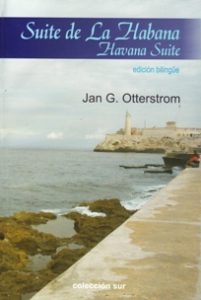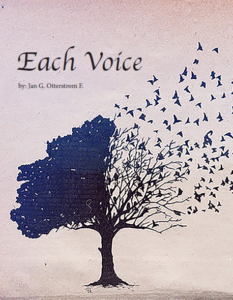Growing up in 1950s La Jolla, young Jan Otterstrom was an unlikely candidate to become a published poet in Fidel Castro’s Havana. Now over seventy years old and living in Costa Rica, Otterstrom F. can look back on a life where poetry slowly and surely took over, and in the process made friends for him in surprising places.
Otterstrom F. sees himself as “a Mormon boy through and through,” and his early life in some ways was like that of many other California Mormons. But in other ways it wasn’t. For example, he did part of his high school in a French-speaking canton of Switzerland, which made his horizons expand drastically. He eventually went to BYU, where he earned his BA, and to Gonzaga University Law School, where he earned his JD. He practiced law until the mid-1980s, when he moved on to the business world. A few years later he traveled to Costa Rica pursuing some investment opportunities, but the venture went bust. “I lost close to $450,000 and was then in Costa Rica broke, but I liked it,” he reminisces.
So he decided to stay in Costa Rica. He earned his MBA from INCAE Business School and eventually pursued some further legal studies in this peaceful Central American nation. He also secured good employment, which eventually led him to travel to Cuba on business. He liked Cuba too. He liked it enough to quit his job and start a business there. In his trips to Cuba, he became acquainted with members of the Unión de Escritores y Artistas de Cuba [Association of Cuban Writers and Artists]. He made good friends in the island (including Nicaraguan poet Ernesto Cardenal), and he shared his poetry with them. Soon, he would have two bilingual poetry collections published in Havana: Loom/Telar and Havana Suite/Suite de la Habana.
Otterstrom F. came to Havana as a businessman, but poetry had been a part of his life for decades before that. During his senior year at BYU, he won the 1967 Hart-Larson Poetry Contest. He continued writing during his spare time but it was not until he found himself out of luck in San José that he published his first volume, Ibis of Imaginings: A Poetic Diary. This book contained his poems written between 1965 and 1994. He would go on to publish over 15 other books of poetry, including the two bilingual editions in Havana. Loom/Telar was particularly successful and as a result enjoyed a second edition, this one being a Spanish-only, five-thousand copy run in Caracas. The bulk of his work has been self-published in English and can be found in the BYU Library or purchased at the BYU Bookstore. Over the years he has written over 1600 poems, many of which can be found in his website. These days literature is his main pursuit, as can be attested by his forthcoming books Each Voice and Proust Inspires the Poet.
Otterstrom F.’s poetry is a reflection of the meandering pathways of his life. His poems always come with a date stamp, which helps weave them all together into a sort of poetic autobiography. Not surprisingly then, his poetry find inspiration in myriads of things, ranging from the angle in which the light hits a porch during an evening in Quito to the frustration felt because of the war in Iraq. There is a stream of quality to it all where images flow into one another or break off suddenly, giving the reader glimpses of where the poet was at the time he wrote the verses.
It is poetry worth reading, so make sure you give Havana’s Mormon poet a try.


